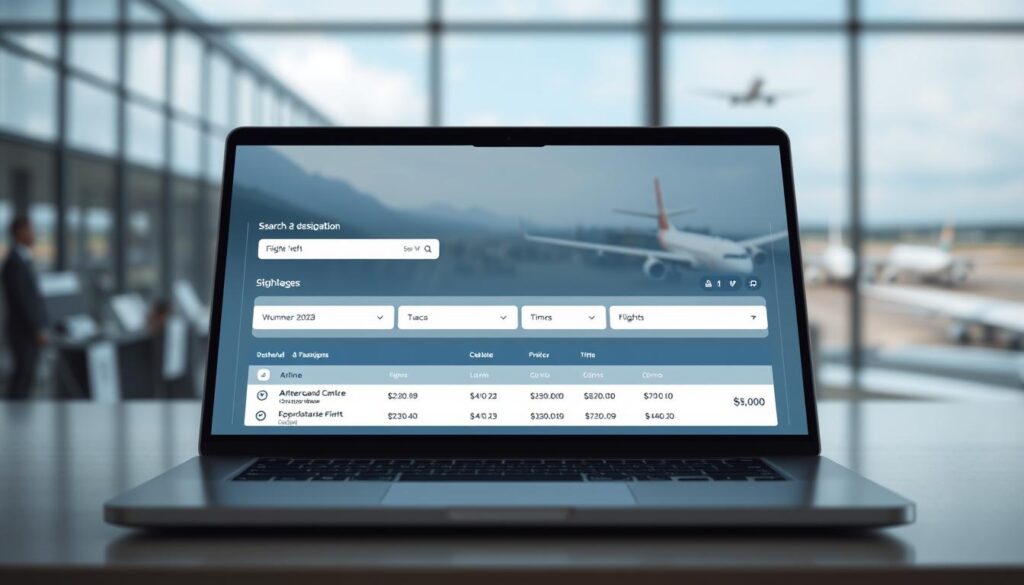What Is a Flight Reconfirmation and Is It Still Needed?
When planning a trip, understanding the nuances of flight booking is crucial. A flight itinerary outlines your proposed route, including departure and arrival airports, flight numbers, and your airline confirmation number.
Receiving a flight itinerary is a significant step, but many travelers are left wondering if they need to reconfirm their flight. The process and necessity of flight reconfirmation can be confusing, and it’s essential to grasp its importance in ensuring a smooth travel experience.
This article aims to clarify the concept of flight reconfirmation and its relevance in today’s air travel landscape, helping you navigate your next flight booking with confidence.
Understanding Flight Reconfirmation
Understanding flight reconfirmation requires a look into the historical context of flight booking systems and reservation management. The airline confirmation number, also known as the booking reference or PNR (Passenger Name Record), is a specific code assigned to each passenger’s reservation. This alphanumeric code serves as a key identifier for your flight details within the airline’s system.
The significance of the airline confirmation number cannot be overstated. It is used to manage flight bookings and reservations, allowing passengers to access their flight details, make changes to their bookings, and check-in online. The airline confirmation number is typically provided by the airline after a passenger completes their booking.
In the context of flight reconfirmation, the airline confirmation number played a vital role in verifying a passenger’s booking details with the airline. Although the process of reconfirming flights is not as prevalent as it once was, understanding the role of the airline confirmation number is essential for grasping the evolution of flight booking systems.
By examining the historical significance of flight reconfirmation and the importance of airline confirmation numbers, travelers can better appreciate the advancements in flight booking technology and reservation management.
The Evolution of Flight Booking Systems
Flight booking systems have evolved dramatically, transforming the travel experience. The days of waiting in line at the airport or calling the airline to book a flight are largely behind us.
Modern airline reservation systems have streamlined the booking process, making it more efficient and convenient for travelers. Many airlines now offer the option to place a hold on a flight and lock in the price for a certain amount of time, often 24 hours, either free or for a fee.

This flexibility allows travelers to come back and book their flight later. Some airlines will even keep your itinerary saved for up to 72 hours, although the price is not guaranteed.
Understanding the difference between a confirmed reservation and a ticketed reservation is crucial. A confirmed reservation means that your flight is reserved, but it may not be ticketed, which is the final step in securing your booking.
The evolution of airline reservation processes has made it easier for travelers to plan and book their trips. With these advancements, travelers can now enjoy a more streamlined and efficient experience when booking flights.
Why Flight Reconfirmation Was Once Essential
Before the advent of digital booking systems, reconfirming flight details was a standard practice. Travelers would often call the airline or visit the airport to confirm their flight reservations, ensuring that all details were accurate and up-to-date.
Having an airline confirmation number was crucial for several reasons. It served as proof of your reservation in case any issues arose during check-in or at the airport. This was particularly important in the pre-digital era when flight information was not as readily available or easily accessible as it is today.
Ensuring Flight Details with Reconfirmation
Reconfirming flight details helped to prevent misunderstandings or miscommunications about flight schedules, departure gates, or other critical travel information. By verifying these details, travelers could avoid potential disruptions to their travel plans.
In addition to providing peace of mind, flight reconfirmation also allowed airlines to manage their bookings more effectively. By confirming passenger lists, airlines could better prepare for flights, reducing the likelihood of last-minute changes or no-shows.
The practice of flight reconfirmation was an essential part of travel preparation, particularly during the pre-digital era. While modern technology has largely made this practice obsolete, understanding its historical significance can provide valuable insights into the evolution of air travel.
What Is a Flight Reconfirmation and Is It Still Needed?
With the rise of digital travel management, the need for flight reconfirmation has become a topic of debate. In the past, reconfirming flights was a standard practice to ensure that passengers’ bookings were valid and that they were aware of any changes to their flight schedules.
However, with advancements in technology and changes in airline practices, the necessity of this practice has diminished. Most airlines now offer online check-in, mobile boarding passes, and real-time updates on flight status, making it easier for passengers to manage their travel plans.
Having an airline confirmation number allows passengers to check-in online before arriving at the airport, reducing the need for manual reconfirmation. This shift towards digital management of flight bookings has streamlined the travel experience, making it more efficient and less prone to errors.
The current need for flight reconfirmation is minimal for most travelers. Airlines typically send automated notifications to passengers regarding their flight status, including any changes or cancellations. Passengers can also proactively check their flight status through the airline’s website or mobile app.
In conclusion, while flight reconfirmation was once an essential step in travel preparation, it is no longer a critical practice due to advancements in technology and changes in airline practices. Passengers can now rely on digital tools to manage their flights, making the travel experience smoother and more convenient.
How to Reconfirm Your Flight When Necessary
In certain situations, reconfirming your flight booking can provide peace of mind for travelers. Although many airlines have moved away from requiring flight reconfirmation, there are still instances where verifying your flight details is beneficial.
Step 1: Check Your Flight Details. Begin by reviewing your flight itinerary for any specific requirements or recommendations from the airline. Some airlines may still suggest or require reconfirmation, especially for certain types of tickets or travel routes.
Step 2: Contact the Airline. If you need to reconfirm your flight, the most straightforward method is to contact the airline directly. This can be done via phone, email, or through the airline’s website or mobile app. Be prepared to provide your booking reference or ticket number.
Step 3: Verify Flight Information. When reconfirming, ensure that all your flight details are correct, including the departure and arrival times, dates, and any layovers. This step is crucial in avoiding any misunderstandings or missed flights.
To ensure a stress-free travel experience, it is crucial to keep your airline confirmation number safe and accessible. Consider saving it on your phone’s notes app or taking a screenshot of the booking details for easy reference offline. By following these steps, you can effectively manage your flight booking and enjoy a hassle-free journey.
Modern Travel Best Practices
The key to a hassle-free travel experience lies in being prepared and informed. In today’s digital age, travelers have numerous tools at their disposal to stay updated on their flight information.
One of the most effective ways to stay informed is by receiving notifications directly from airlines. Airlines often send updates via email or SMS alerts to keep passengers informed about their flight status. By having your confirmation number readily available, you can quickly access these updates and make necessary adjustments to your travel plans if required.
Staying Organized with Technology
Travelers can leverage technology to stay organized. Many airlines offer mobile apps that allow passengers to check-in, track their flight status, and receive real-time updates. Additionally, travelers can use digital calendars to keep track of their flight schedules and set reminders for check-in and boarding times.

Another best practice is to regularly check the airline’s website or mobile app for any updates on flight schedules or travel requirements. This proactive approach can help mitigate the impact of unexpected changes or disruptions.
By adopting these modern travel best practices, travelers can ensure a smoother, more enjoyable journey. Staying informed and organized not only reduces stress but also enhances the overall travel experience.
Conclusion
Understanding flight reconfirmation is crucial for a smooth travel experience. As discussed, an airline confirmation number is a vital component of any air travel arrangement, serving as proof of reservation and providing easy access to flight details and updates.
By being informed about airline practices and the role of flight reconfirmation, travelers can better navigate the complexities of flight booking and management. This knowledge enables individuals to prepare for their journey, ensuring a more enjoyable and stress-free travel experience.
In today’s digital age, staying up-to-date with flight information is easier than ever. By leveraging technology and understanding airline practices, travelers can optimize their travel experience, making the most of their time and minimizing potential disruptions.
